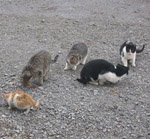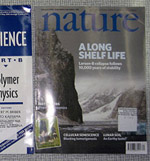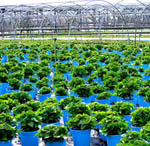Invasive trout populations more productive than the natives they replace
 Fish,
Fish,  Freshwater,
Freshwater,  Invasive
Invasive Brook Trout (Salvelinus fontinalis) from American Fishes by Goode and Gill (1903)In streams across much of the western United States the exotic brook trout has been replacing its native relative - the cutthroat.
Now a new study in the Transactions of the American Fisheries Society shows that this non-native trout has been successfully obtaining greater density, biomass, and annual production than that achieved by the native cutthroat prior to replacement.
Several studies have investigated the mechanisms and consequences of the brook trout’s incursion from eastern to western North American, yet none have quantified the extent of the fish’s success.
In this regard, this new study is very important because production and density values are helpful in understanding the changes that may be occuring in the ecosystem.
Surveys of the Teton River in Big Hole Mountains, Idaho, revealed the brook trout’s extensive dominance. They exhibited 2.4 times more density, 1.7 times more biomass, and 2.5 times higher annual production than the cutthroat species.
Researchers Joseph Benjamin and Colden Baxter from Idaho State University also found some evidence that the young brook trout may be a driving factor in this greater growth. When 0-aged invasive fish were removed there was no statistical difference in density between the two species even though the brook trout still had greater biomass and production.
Since brook trout fry hatch earlier in the growing season than cutthroat, it may give them a size advantage that " can increase overwinter survival" and "allow them to consume a broader size range of benthic invertebrate prey because of their larger gape."
Still, the researchers caution that "differences in recruitment alone may not be sufficient to explain the patterns" and that "the mechanisms involved remain uncertain."
The study findings could have broader ecosystem and food web consequences. For example, the authors note that non-native trout could have greater impacts on bethnic invertebrates than the native cutthroat.
However, they warn that more research is needed to better understand these potential consequences.
--by Evyan Borgnis
Joseph R. Benjamin and Colden V. Baxter (2010). Do Nonnative Salmonines Exhibit Greater Density and Production than the Natives They Replace? A Comparison of Nonnative Brook Trout with Native Cutthroat Trout Transactions of the American Fisheries Society : 10.1577/T09-102.1




Reader Comments